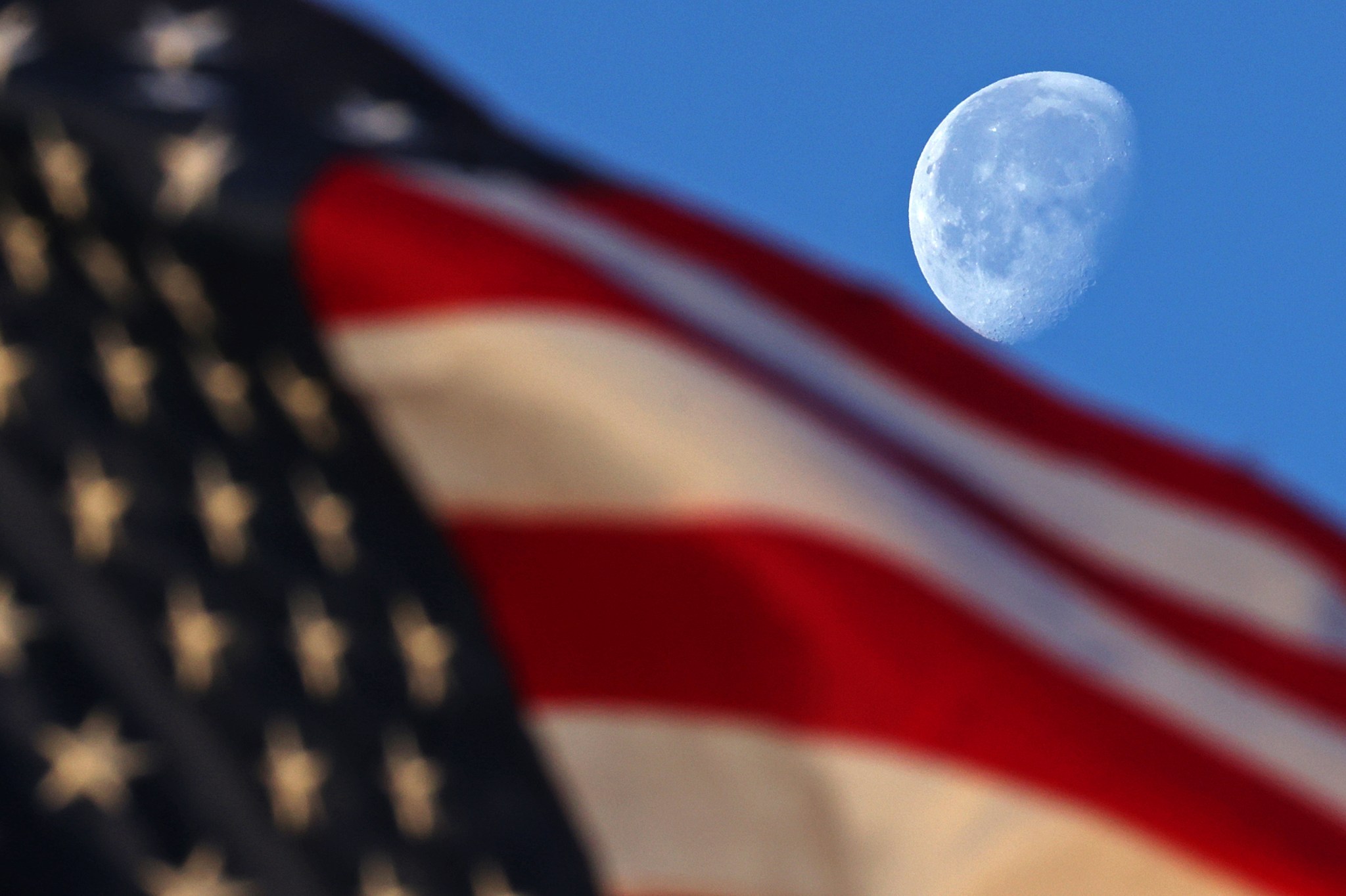Moon and Flag at NASA Michoud
- The waning gibbous moon phase occurs after the full moon, when the Moon begins its journey back toward the Sun.
- During this phase, the opposite side of the Moon reflects the Moon’s light, causing the lighted side to appear smaller from our perspective.
- The Moon’s orbit is simply carrying it out of view from our perspective as it rises later and later each night.
- The waning gibbous moon phase is characterized by a decreasing amount of illuminated surface area on the Moon.
- This phenomenon occurs due to the changing angle of the Sun’s light as the Moon moves away from full illumination, resulting in a gradual decrease in brightness.
Just after sunrise, the waning gibbous moon sets just behind a waving United States flag on March 19, 2025, in this image from NASA’s Michoud Assembly Facility in New Orleans. The waning gibbous moon phase comes after the full moon. As the Moon begins its journey back toward the Sun, the opposite side of the Moon now reflects the Moon’s light. The lighted side appears to shrink, but the Moon’s orbit is simply carrying it out of view from our perspective. The Moon also rises later and later each night.
Image credit: NASA/Michael DeMocker
Q. When does the waning gibbous moon set just behind a waving United States flag?
A. Just after sunrise, on March 19, 2025.
Q. What is happening to the Moon as it begins its journey back toward the Sun?
A. The opposite side of the Moon now reflects the Moon’s light.
Q. Why does the lighted side of the Moon appear to shrink?
A. It’s not actually shrinking, but rather our perspective is changing as the Moon rises later and later each night.
Q. What is causing the Moon to rise later and later each night?
A. The Moon’s orbit is simply carrying it out of view from our perspective.
Q. When did the image was taken?
A. March 19, 2025.
Q. Where was the image taken?
A. NASA’s Michoud Assembly Facility in New Orleans.
Q. Who took the photo?
A. Michael DeMocker for NASA.
Q. What is the significance of the Moon’s orbit changing its visibility from our perspective?
A. It’s a natural phenomenon that occurs as the Moon moves through its phases.
Q. Why is it important to note the Moon’s phase and orbit?
A. To understand the changing appearance of the Moon in the sky and its relationship with the Sun.
Q. What can be inferred about the timing of the image from the text?
A. The image was taken at sunrise, just after the waning gibbous moon had set behind the flag.

